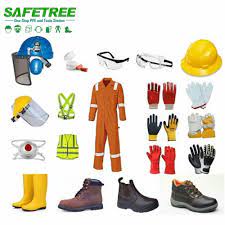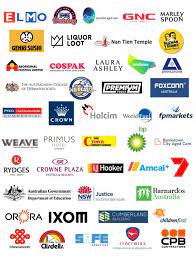Safety Equipment: Protecting Lives and Ensuring Security
In today’s fast-paced world, safety has become a paramount concern for individuals and organizations alike. Whether it’s in the workplace, on the road, or at home, the need for reliable safety equipment cannot be overstated. These essential tools play a crucial role in preventing accidents, mitigating risks, and safeguarding lives.
One of the most critical areas where safety equipment is indispensable is in industrial settings. Industries such as construction, manufacturing, and oil and gas are known for their inherent risks and hazards. In these environments, workers face potential dangers such as falls from heights, exposure to hazardous substances, electrical shocks, and more. To ensure their well-being, employers must provide appropriate safety equipment.
Personal Protective Equipment (PPE) is a broad category that encompasses various safety gear designed to protect individuals from workplace hazards. This includes items such as helmets, gloves, goggles, earplugs or earmuffs, high-visibility clothing, respirators, and safety shoes. By using PPE correctly and consistently, workers can significantly reduce the risk of injury or illness.
Another crucial aspect of safety equipment is fire prevention and protection. Fires can cause immense damage to property and pose severe threats to human life. Fire extinguishers are among the most common safety devices used to combat small fires before they escalate. These portable devices come in different types suitable for specific fire classes (A, B, C), ensuring effective suppression based on the fuel source involved.
Fire alarms and smoke detectors are also integral components of any comprehensive fire safety system. These devices detect smoke or excessive heat early on and sound an alarm to alert occupants to evacuate promptly. Coupled with fire sprinkler systems that automatically release water when triggered by heat or smoke detection systems, these measures greatly enhance overall fire protection.
For road users’ safety, traffic management authorities employ various equipment to ensure smooth traffic flow while minimizing accidents. Traffic cones, barricades, and delineators are used to redirect vehicles and create safe zones during road repairs or emergencies. Reflective vests and jackets improve visibility for road workers, while speed bumps and rumble strips help control vehicle speeds in specific areas.
In recent years, technological advancements have led to the development of innovative safety equipment. For instance, wearable devices with built-in sensors can monitor workers’ vital signs or detect hazardous gases in real-time. These smart technologies provide instant alerts and enable prompt action to prevent accidents or health risks.
It’s important not to overlook home safety as well. Smoke detectors, carbon monoxide detectors, fire blankets, and fire escape ladders are essential safety equipment for residential properties. These devices provide early warnings of potential dangers and aid in swift evacuation during emergencies.
In conclusion, safety equipment plays a crucial role in protecting lives and ensuring security across various domains. From industrial settings to roadways and residential properties, these tools are indispensable in mitigating risks and preventing accidents. Employers, individuals, and authorities must prioritize the provision and proper use of safety equipment to create safer environments for everyone involved. By investing in reliable safety gear and staying updated with the latest advancements in the field, we can collectively work towards a safer future.
Frequently Asked Questions About Safety Equipment: Exploring Five Common Types, Understanding the Concept of Safety Equipment, Unveiling Site-Specific Safety Equipment, and Identifying Three Examples of Safety Equipment.
- What are five safety equipment?
- What is safety equipments?
- What is site safety equipment?
- What are 3 examples of safety equipment?
What are five safety equipment?
- Hard Hats: Hard hats are essential safety equipment used in construction sites, industrial settings, and other workplaces where there is a risk of falling objects or head injuries. They provide protection for the head and help prevent serious head trauma.
- Safety Gloves: Safety gloves are designed to protect hands from various hazards such as cuts, abrasions, chemicals, and thermal risks. They come in different materials and designs depending on the specific tasks and potential risks involved.
- Safety Goggles: Safety goggles provide eye protection against flying debris, chemicals, dust particles, or any other potential eye hazards. They form a protective barrier around the eyes to prevent injuries and maintain clear vision in hazardous environments.
- High-Visibility Clothing: High-visibility clothing, often in fluorescent colors with reflective strips, is crucial for workers who operate in low-light conditions or areas with moving vehicles. This type of clothing enhances visibility and helps prevent accidents by making individuals more easily seen by others.
- Fire Extinguishers: Fire extinguishers are portable devices used to control small fires before they spread or escalate. They come in different types suitable for various fire classes (A, B, C) based on the fuel involved. Having fire extinguishers readily available can help contain fires and save lives.
These are just a few examples of safety equipment commonly used across different industries and settings. The specific safety equipment required may vary depending on the nature of the work environment and potential hazards present.
What is safety equipments?
Safety equipment refers to a wide range of devices, tools, and gear designed to protect individuals from potential hazards, minimize risks, and ensure their safety in various environments. These equipment are specifically designed to prevent accidents, injuries, and illnesses by providing a physical barrier or enhancing safety measures.
Safety equipment can encompass different categories depending on the specific context or industry. Some common types of safety equipment include:
- Personal Protective Equipment (PPE): This category includes items such as helmets, gloves, goggles, face shields, earplugs or earmuffs, high-visibility clothing, respirators, safety shoes, and fall protection gear. PPE is used to protect workers from workplace hazards such as falls from heights, exposure to chemicals or harmful substances, loud noises, flying debris or particles, and other potential risks.
- Fire Safety Equipment: Fire extinguishers, fire alarms, smoke detectors, fire sprinkler systems, fire blankets, and fire escape ladders are examples of safety equipment used to prevent fires or minimize their impact. These devices are crucial in detecting fires early on and enabling prompt evacuation or suppression measures.
- Traffic Safety Equipment: Traffic cones, barricades, delineators (reflective markers), speed bumps/rumble strips help manage traffic flow and ensure road safety. Reflective vests/jackets for road workers enhance visibility during road repairs or maintenance activities.
- Industrial Safety Equipment: In industrial settings like construction sites or manufacturing plants where there are specific occupational hazards present (e.g., heavy machinery operation), safety equipment includes guardrails/handrails for fall protection; lockout/tagout devices for energy control; gas detectors for monitoring hazardous gases; eye wash stations/showers for chemical exposure emergencies; and more.
- Home Safety Equipment: Smoke detectors/alarms, carbon monoxide detectors/alarms provide early warnings of potential dangers in residential properties. Fire extinguishers suitable for home use and fire escape ladders are also essential safety equipment for household safety.
- Medical Safety Equipment: In healthcare settings, safety equipment includes items like gloves, masks, gowns, face shields, and goggles to protect healthcare workers from infectious diseases or other biological hazards.
These are just a few examples of safety equipment categories. The specific types of safety equipment required will depend on the environment, industry, or activity being undertaken. It is crucial to assess the potential risks and hazards in each situation and provide the appropriate safety equipment to ensure the well-being and protection of individuals involved.
What is site safety equipment?
Site safety equipment refers to a range of tools, devices, and gear specifically designed to enhance safety and mitigate risks in construction sites, industrial facilities, and other work environments. These equipment are essential for protecting workers, preventing accidents, and ensuring compliance with safety regulations.
Some common examples of site safety equipment include:
- Hard Hats: Also known as safety helmets, hard hats protect the head from falling objects, impacts, and electrical hazards.
- Safety Glasses/Goggles: These eye protection devices shield the eyes from debris, chemicals, sparks, or any other potential hazards that may cause eye injuries.
- High-Visibility Clothing: Brightly colored vests or jackets with reflective strips are worn to enhance visibility and increase awareness of workers in areas with moving vehicles or machinery.
- Safety Gloves: Designed to protect hands from cuts, abrasions, chemicals, or extreme temperatures during various tasks and operations.
- Safety Footwear: Specialized boots or shoes with reinforced toes and slip-resistant soles provide protection against heavy objects falling on the feet and reduce the risk of slips and trips.
- Respiratory Protection: Masks or respirators are used to filter out harmful particles, dust, fumes, gases, or airborne contaminants that can be detrimental to respiratory health.
- Fall Protection Equipment: This includes harnesses, lanyards (fall arrest systems), guardrails, safety nets, and anchor points that prevent falls from heights by securing workers to a stable structure.
- Hearing Protection Devices: Earplugs or earmuffs are worn in noisy work environments to reduce exposure to excessive noise levels that can lead to hearing damage.
- Protective Clothing: Flame-resistant clothing (FR) protects against fire hazards; chemical-resistant suits guard against contact with hazardous substances; and anti-static garments prevent static electricity buildup in sensitive areas.
- First Aid Kits: Essential medical supplies readily available on-site for immediate response to injuries or medical emergencies.
- Safety Signs and Barricades: Warning signs, caution tapes, cones, and barricades are used to mark hazardous areas, direct traffic flow, and communicate safety instructions.
- Fire Safety Equipment: Fire extinguishers, fire alarms, smoke detectors, sprinkler systems, and fire blankets are crucial for early detection and suppression of fires.
These are just a few examples of the wide range of site safety equipment available. The specific equipment required will depend on the nature of the work being carried out and the potential hazards present at a particular site. It is essential for employers to assess risks and provide appropriate safety equipment to ensure the well-being of workers and maintain a safe working environment.
What are 3 examples of safety equipment?
- Hard Hats: Hard hats are a common type of safety equipment used in construction sites, industrial settings, and other workplaces where there is a risk of falling objects or head injuries. They provide protection to the wearer’s head from impact, penetration, and electrical hazards.
- Safety Goggles: Safety goggles are designed to protect the eyes from potential hazards such as flying debris, chemicals, or harmful liquids. They are commonly used in laboratories, manufacturing facilities, and construction sites. Safety goggles provide a barrier against splashes, dust particles, and other materials that could cause eye injuries.
- Earplugs or Earmuffs: Ear protection is vital in environments with high noise levels to prevent hearing damage. Earplugs and earmuffs are two common types of hearing protection devices. Earplugs are inserted into the ear canal to reduce noise exposure, while earmuffs cover the entire ear to block out loud sounds. These safety equipment options are commonly used in industries like construction, manufacturing, and aviation where noise levels can be excessive.
Please note that these examples represent just a few types of safety equipment available, and the specific safety equipment required will depend on the nature of the workplace or activity being undertaken.




